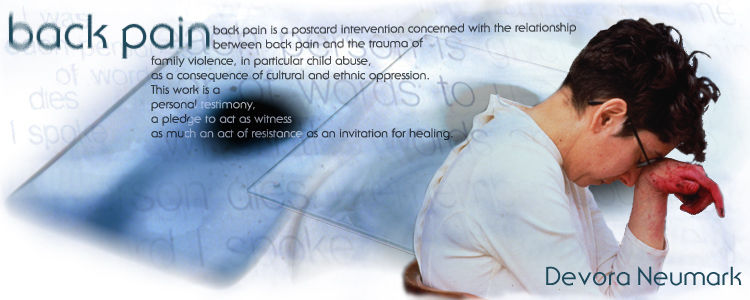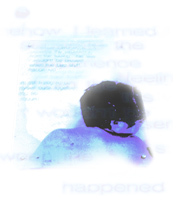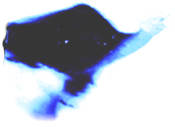The
following listing combines research material for my work
as well as articles that have appeared about my work.
Allison,
Dorothy Two or three things I know for sure. Plume / Penguin
Group: New York and London. 1995
Alphen, Ernst Van Caught by History: Holocaust Effects in Contemporary
Art, Literature, and Theory. Stanford University Press: Stanford,
CA. 1997
Aquin, Stéphane Sur l'expérience de la ville: Les vingt-cinq
ans d'Optica.
Voir 64: September 11 - 17, 1997
Aquin, Stéphane L'Art inquiet: Artistes, vos papiers!
Voir 12 No 4
January 29 - February 4, 1998
Arnold, Janice Placemats publicize issues of conjugal violence.
Canadian
Jewish News A-3: Tuesday, Feb 27, 1996
Arnold, Janice Song addresses issue of conjugal violence. Canadian
Jewish News July 3, 1997
Beattie, Melody Beyond Codependency and getting better all the time.
Harper& Row: San Francisco, CA. 1989
Beatty,Greg Mourning rituals examined. The Leader Post Regina
D-6:
Saturday, March 4, 1995
Becker, Darren Power of Music: Project tries novel way to help victims
of
conjugal violence. The Montreal Gazette Thursday, September 4 1997
Bolton, Richard The Contest of Meaning: Critical Histories of Photography.
MIT Press: Cambridge, MA. 1989
Boutet, Danielle Interdisciplinary Practice: A Challenge to Art Discourses.
Parallélogramme Art Contemporain 20 No. 4 1995 (pp 38-46).
Brunham, Linda Frye and Durland, Steven. Editors The Citizen Artist:
20
Years of Art in the Public Arena, An Anthology from High Performance
Magazine 1978 -1998. Critical Press (The Gunk Foundation). 1998
Carlevaris, Anna monumental amnesia: recent installations by Devora
Neumark. published in Light Year: A Festival of Photographies The
Floating Gallery: Winnipeg, Manitoba. 1998
Caruth, Cathy. Editor Trauma: Explorations in Memory. The John
Hopkins
University Press: Baltimore, MD. 1995
Duncan, Ann Art for a time: artist doesn't expect this work to last.
The
Montreal Gazette A-4: Monday, May 25, 1992
Duncan, Ann Artist goes to the mat to fight conjugal violence.
The
Montreal Gazette I-6: Saturday, March 2, 1996
Felman, Shoshana and Laub, Dori Testimony: Crises of Witnessing in
Literature, Psychoanalysis, and History. Routledge, Chapman and
Hall, Inc.:
London and New York, NY. 1992
Felshin, Nina. Editor But is it Art?:The Spirit of Art as Activism.
Bay
Press: Seattle, WA. 1995
Friedlander,Saul Probing the Limits of Representation: Nazism and
the
'Final Solution'. Harvard University Press: London and Cambridge,
MA. 1992
Haines,
Staci The Survivor's Guide to Sex: How To Have an Empowered Sex Life
After Childhood Sexual Abuse. Cleis Press, Inc: San Francisco, CA.
1999
Herman, Judith Lewis Trauma and Recovery: The aftermath of violence
- from domestic abuse to political terror. HarperCollins Publishers,
Inc.
1992
Kappeler, Suzanne The Will To Violence: The Politics of Personal
Behaviour. Teachers College Press: New York, NY. 1995
Knaff, Devorah L. At second glance. The Press Enterprise (Riverside,
California) F-20: Sunday January 17, 1999
Lachapelle, Louise Lieux communs : le don et l'art. Ethica Vol.
10 no 2
(p. 73-96). 1998
Lachapelle, Louise Le don ruiné: À propos de <<L'art
est un virus>> de
René Payant. Revue Trois: Laval, PQ. 13 no. 2 1998 (pp 63-85).
Lacy, Suzanne. Editor Mapping the Terrain: New Genre Public Art.
Bay
Press: Seattle, WA. 1995
Lamarche, Bernard Sur le chemin des écoliers: Pour célébrer
ses 25 ans,
Optica parraine une série d'interventions urbaines. Le Devoir
D-11:
Saturday, October 18, 1997
Lamarche, Bernard L'art engagé: De l'art et des rapports au
politique.
Le Devoir D-5: Saturday, Feb. 15, 1998
Lowen, Alexander Depression and the Body: The Biological Basis of
Faith
and Reality. Penguin Books: NY.
Ring, Nancy Devora Neumark: Metro Square Victoria. Parachute
#82, 1996
Scarry, Elaine The Body in Pain: The Making and Unmaking of the World.
Oxford University Press: 1985
Scott, Charles E. The Time of Memory. State University of New
York Press: 1999
Seamon, David and Mugerauer, Robert. Editors Dwelling, Place &
Environment: towards a phenomenology of person and world. Columbia
University Press: New York and Oxford. 1985
Whitmer, Barbara The Violence Mythos. State University of New
York Press: Albany, NY. 1997
Wisechild, Louise M. She who was Lost is Remembered: Healing from
Incest Through Creativity. The Seal Press Seattle, WA. (Distributed
in Canada through Raincoast Book Distribution, Vancouver BC.) 1991








